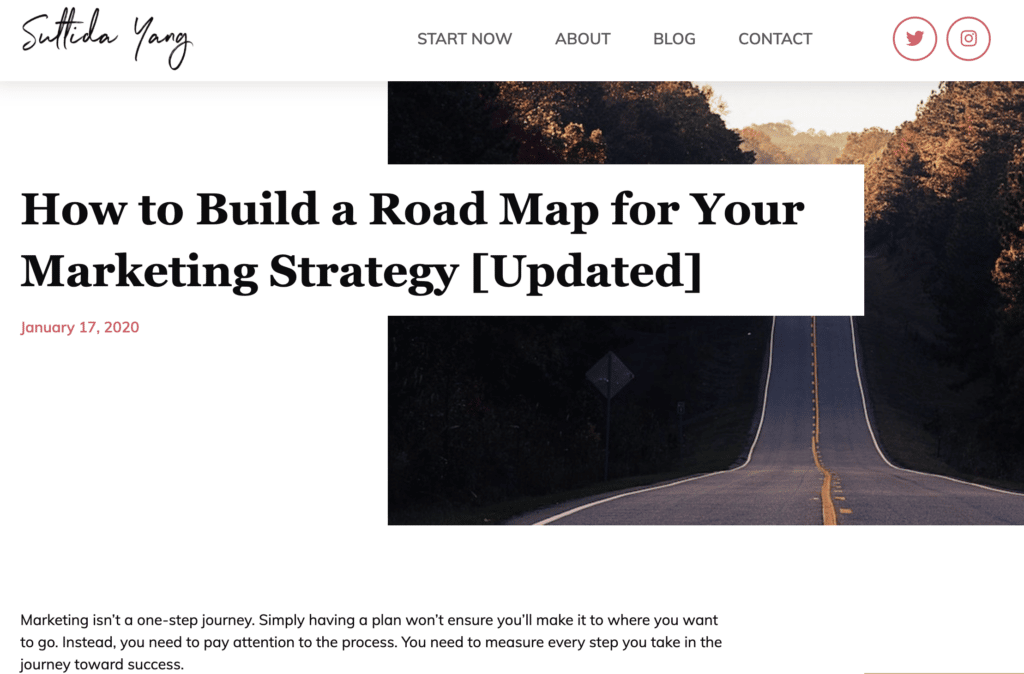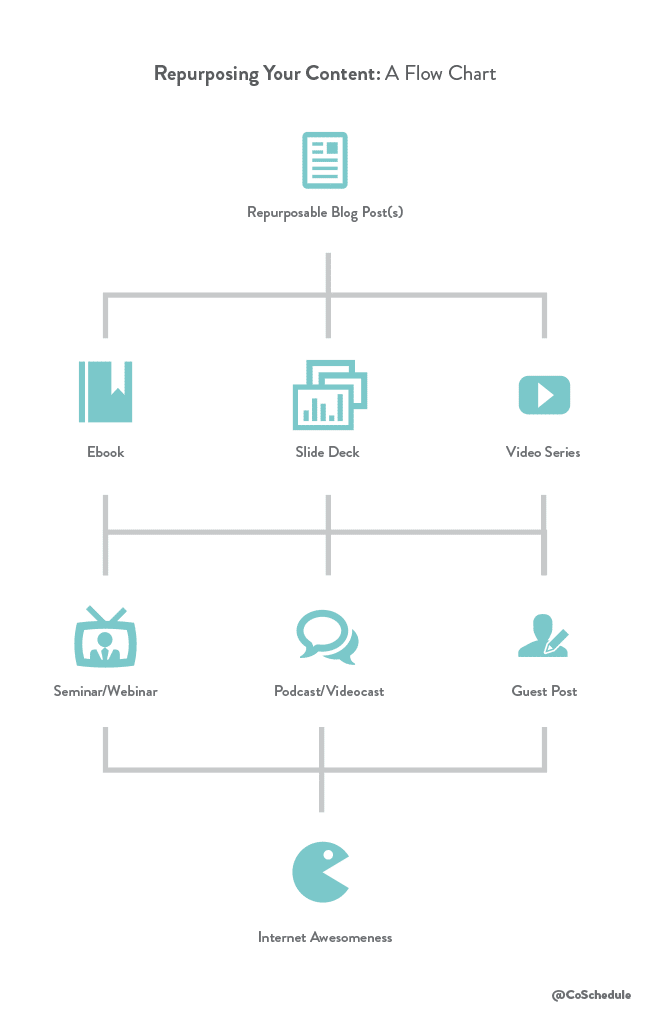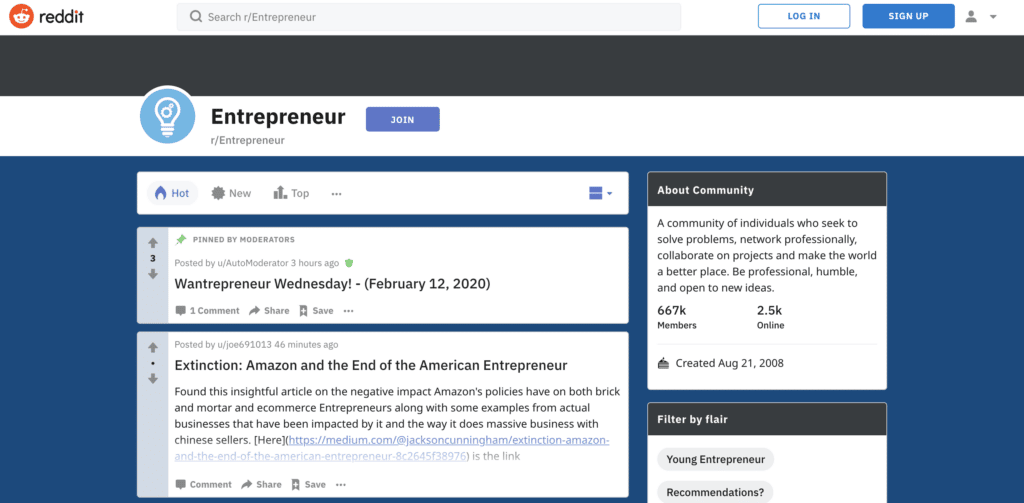Starting a blog is challenging enough: it takes tons of research to find a profitable niche, then countless hours to build out your blog and start posting content.
But sustaining a blog is arguably harder: you’re constantly writing new content to keep people coming back. You’ve got to maintain your rankings and keep an eye on your competitors.
And studies show that the average blog post takes three hours and 16 minutes to write, meaning you’re investing tons of time in content creation alone!
It’s no surprise that bloggers want to get as much mileage from their content as possible. It’s Business 101: the less time you spend on a task, the less money you spend doing that task.
If you’re already blogging as efficiently and cost-effectively as possible, consider the following ways to maximize your blogging efforts and get more from every piece of content you create:
1. Update Older Posts with New Insights
Some blog content ages better than others. But if you want to wow every reader, you’ll make certain that all of the information in your blog posts are up-to-date. Things like links, dates, stats, and other details can change over time. And if your reader notices something old or untrue in your blog posts, it could affect how much they trust you for their future content needs.

In fact, research shows that bloggers who update older content with new information are 74% more likely to report strong results.
Get into the habit of reviewing your blog posts every so often to check for link quality and relevancy, stats, and other information that will impact your reader’s opinion of your blog.
Check each link to see the date and relevancy of the content you’ve linked out to. In some cases, you may want to replace one link with a better source to improve the reader experience.
2. Turn Blogs into Other Types of Content
When you create a blog post, chances are that same content can be useful in a wide variety of formats. For example, if you did a case study on your consulting practice, then you might use that same data from the case study and turn it into a helpful infographic or white paper.
Content comes in many different shapes and sizes, including but not limited to:
- Interviews
- Q&As
- Videos
- Guides
- Checklists
- Case studies
- Infographics
- White papers
- Presentations
- Webinars
- Social media posts
- Audio or podcasts
- eBooks
- Newsletters
- Crash courses
This list doesn’t begin to cover all the different types of marketing content you could create with your blog post. Likewise, you don’t need to try to turn every blog post into every type of content on this list. Think about what makes the most logical sense: that is, how your users would most likely want to consume the information you’re presenting.
Check out these blog posts to gain some deeper insight:
- Expanding the Lifecycle of Your Content Assets
- How to Develop Content Clusters to Drive More Leads and Sales
3. Comment on Other People’s Blogs
The most well-written, well-researched, thought-out blog posts are essentially useless if nobody reads them. If you want to get your content in front of more people, consider returning the favor before the favor is granted.
Connect with bloggers that interest you or that are in your industry or niche and show them your support. Comment on their content, give them feedback, and share your block with them so they can do the same.
As a result, everyone who reads their blog will also see your comments and be exposed to your brand. Plus, flattery is one of the easiest ways to start building strategic partnerships. You might end up with a new friend in the blogging world who would be willing to let you guest post on their site and draw even more attention to your blog.
4. Share Your Blog on Reddit
The anything-goes forum, Reddit allows users to post their own questions and content and respond to other people’s content. What’s unique about Reddit is that there’s a topic (and tons of subtopics) for just about everything.
You can search for niche-specific “Reddits” and “subreddits” pertaining to the type of content you write, then drop a link to your blog post in your answer that users may find helpful. You’re providing them a highly relevant source to help them with their question while driving users to your blog.
Plus, anyone else who has that same question will see your response and the link you provided.
5. Invite Guest Bloggers to Contribute
Even though your blog is personal to you, you don’t have to create all the content for it on your own. Allow other bloggers to guest post on your blog to expand your content creation efforts.
Research shows that nearly 63% of readers believe that blogs with multiple bloggers are more credible. You’ll end up with highly relevant content made for your audience, for free, along with authors who will want to share their posts on your blog with their audiences. It’s a win-win for everyone.
6. Create Evergreen Content
Evergreen content refers to content that maintains relevancy with age. Unlike news headlines are things that are only relevant in the moment, Evergreen content can continue to deliver value to your readers a month, a year, or even five years after you write it.
For example, instead of writing about where to find local Christmas trees in 2019, you might instead talk about the different varieties of Christmas trees. Christmas tree marketplaces may change each year and need updating, but different Christmas tree types will continue to be relevant over time.
More Mileage = More Opportunities
Ideally, every blog post you write will be more than a one-trick pony. Many bloggers have made it their own credo that if they can’t get at least five unique uses out of a blog post, then they need to rethink their approach.
The more you’re able to get from your blogging efforts, the more opportunities you can present yourself with in terms of views, clicks, shares, and sales.
For more blogging insights, check out my post on 10 surefire ways to make money blogging.







